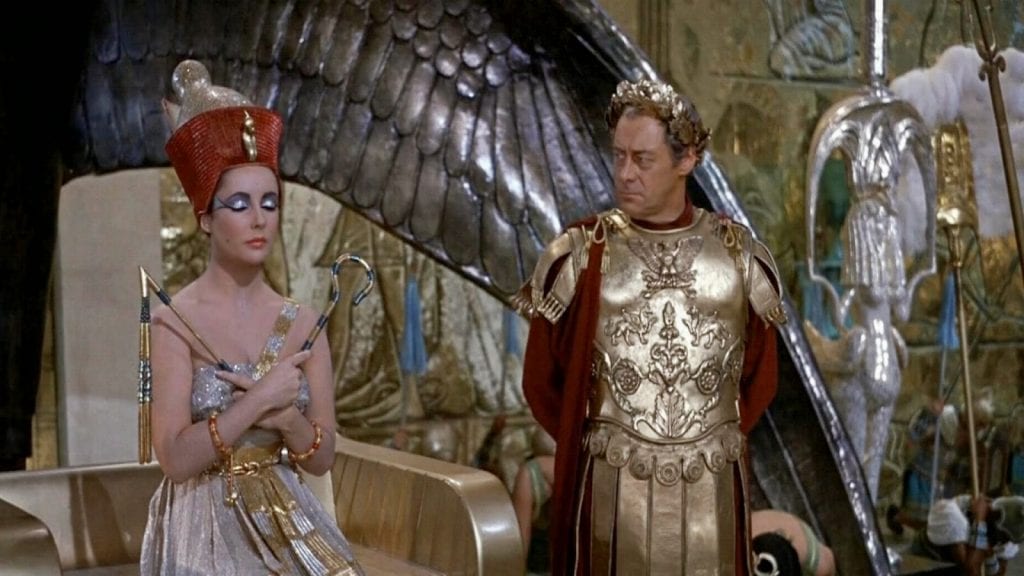
The birth, splendor and fall of the Roman Empire It is one of the most studied moments in world history. The cinema, as a reflection of humanity, has not been able to resist Roman films.
Plots set during the more than 500 years that Rome ruled. And this without including the Eastern Roman Empire or the Byzantine Empire, which stood until 1453. All have been present since the cinematographic work was young and very promising. Classic cinema is a good example of this.
Many of the most successful and spectacular films of all time have their genesis in Rome. Also several of the most notorious failures. And since it is almost always about large productions with high budgets, there are no middle ground between success and failure.
Roman movies: conspiracy to conspiracy
Secret plots to depose an emperor, malevolent plans to achieve power and glory. This is basically the plot structure of most Roman movies.
So much power and so vast tracts of land under the command of a single person. Up to 6.500.000 square kilometers in the period of greatest splendor. Too great a temptation.
Judah Ben-Hur: the character

Written by Lewis Wallace and published in November 1880. Ben-Hur it was for little more than 50 years, the best-selling book in the United States. It was surpassed in 1936 by gone With the Wind by Margaret Mitchell. A fictional story about the adventures of a Jewish prince in the time of Jesus Christ. It also had the approval of the Catholic Church.
In 1907,, when the film industry was beginning to settle, Ben-Hur debuted on the big screen. This first appearance was almost clandestine. It was a 15-minute short film, made without authorization. Several of the scenes were secretly filmed at a theatrical show.
Wallace's heirs sued the producer for copyright infringement. And that, although for the date that term did not exist. They obtained a compensation of $ 25.000 and a precedent was set. From now on, film producers would have to acquire the rights to the literary works they wanted to adapt.
Prince Judah Ben-Hur's "official" film debut occurred in 1925. Directed by Fred Nible Ben-Hur: A tale of the Christ it was an outstanding public success. However, he pointed to the challenge faced by producers who wanted to embark on Roman films. Productions so expensive that not even cramming the rooms with people could recover the investment.
1959: the year that marked a before and after in Roman movies
The most famous of the tapes of Ben-Hur would arrive in 1959. Directed by William Wyler and starring Charlton Heston with Stephen Boyd, Jack Hawkis, Hugh Griffith and Haya Hararect. It is said that it was probably also one of the best set in Ancient Rome.
It had the highest budget for the time: about $ 15 million. But contrary to what had been happening (and still occurs) with many of the mega productions of the peplum genre (films set in antiquity and in the Greco-Roman Era, many call them films of sandals and swords), it did manage to raise enough money. Not only for the study to recover the investment, but also to leave large profits.
Still today, the quality achieved in terms of art direction, costumes, photography and special effects, is still impressive.
Winner of 11 Oscars, which makes it next to Titanic by James Cameron (1997) and The Lord of the Rings: The Return of the King by Peter Jackson (2003), in the movie with the most statuettes in history.
In 2016 a third film adaptation of Ben-Hur. Directed by Russian Timur Bekmambetov, the film was ignored by audiences and destroyed by critics.
Cleopatra and Julius Caesar: other iconic characters
The most famous movie with the last queen of the Ancient Egyptian Empire and the most iconic of the Roman emperors as the protagonist. Is about Cleopatraby Joseph L. Mankiewicz (1963).
After the success of Ben-Hur, Twentieth Century Fox spared no resources for another blockbuster set in Rome. The total investment for the realization of this film would reach the figure of 44 million dollars.
Despite being the highest grossing film of the 60s, it nearly drags the studio out of business. Additionally, critics considered it at the time as a despicable waste of money.
More than the film itself, something else transcended in time, in addition to the enormous economic losses it represented. It was the love affair between Elizabeth Taylor and Richard Burton, the protagonists.

Before CleopatraMankiewicz had already ventured into Roman movies. In 1953, starring Marlon Brando, he brought William Shakespeare's play to the big screen Julius Caesar.
The same text was adapted in 1970 by Stuart Burge, with Charlton Heston as the protagonist. Known in Latin America as The assassination of Julius Caesar, the film failed to survive in history.
The XNUMXst century: Gladiator (and the others)
After the disaster of Cleopatra, the big Hollywood studios weren't quite sure they wanted to invest in Roman movies again. Until in 2000 it was released Gladiatorby Ridley Scott.
It was praised by the critics (although not unanimously) and with almost 500 million worldwide collection. Rome was back in fashion in the movies.
So far in the XNUMXst century, productions set in the old empire have resumed a certain frequency. Although the economic results (and in some cases, the artistic ones) remain far from the splendor of the time of Ben-Hur or that of the level reached by Gladiator.
Some of these movies are:
- The legion of the eagle, by Kevin Macdonald (2011). With Channing Tatum, Jamie Bell, Donald Sutherland, and Mark Strong.
- Ágora, by Alejandro Amenabar (2009). With Rachel Weisz, Max Minghekka and Oscar Isaac.
- Pompeiiby Paul WS Anderson (2014). With Kit Harington, Emily Browning, Carrie-Anne Moss and Keifer Sutherland.
- Centurion, by Neil Marshall (2010). With Michael Fassbender and Dominic West.
Image sources: Bolsamanía / Aleteia / ElPlural.com